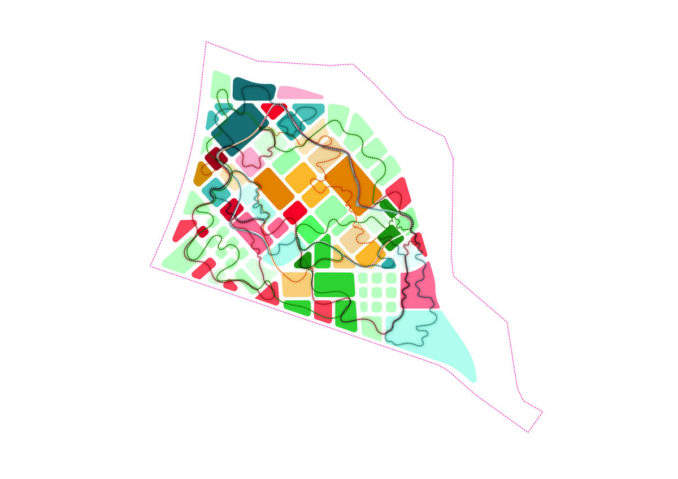
From a contaminated industrial estate to a 5.5 sq km oasis of nature in the heart of Beijing, China. The Central Green Forest Park has been essential to the ecological recovery of a site that was a former chemicals factory. It has fast become one of Beijing’s most popular green spaces, playing host to an array of recreation and education activities.
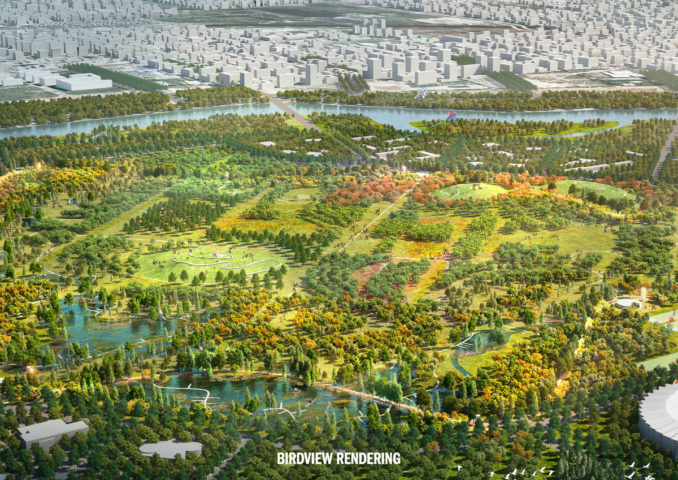
Designed around the traditional 24-season Chinese lunar calendar, the park’s mosaic of flexible forest rooms emphasise the changing seasons and will change as the park matures over time. From bird watching areas, playgrounds, botanic gardens, sports fields, observation hills and sculpture parks, the patchwork of rooms offers endless recreation possibilities.
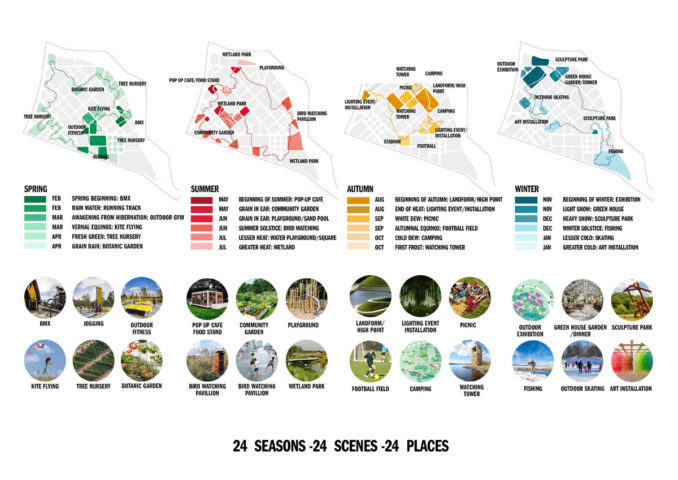
Phrenology – the study of periodic events in biological life cycles – helped guide our approach to planting and creating authentic seasonal journeys for visitors. For example, the behavior of various species of birds influenced the planting design for the Minor Cold area – like geese flying north, magpies building nests and ring-necked pheasants beginning to crow.
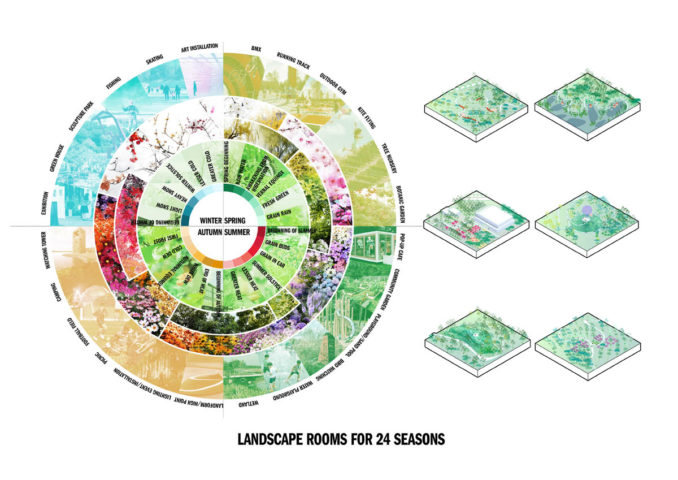
Cultural response to form a landscape over time
Our approach was to create an instruction guideline that would direct the growth of the forest through time, turning it into a place of high ecological and cultural value, and an expression of the unique identity of Tongzhou.
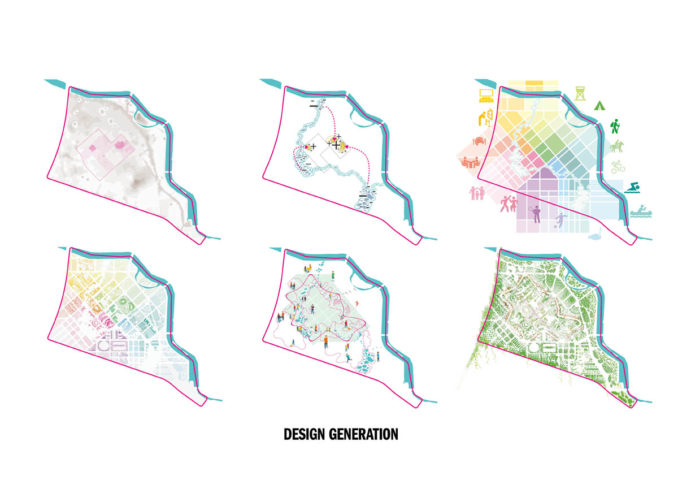
This allowed us to create a mosaic of ‘forest rooms’, a living Arboretum forming patterns of tree growth which responding to a suite of activities programmed into the park to correspond to the 24 seasons of the traditional lunar calendar in China. Interspersed among the forest are activity destinations which will flourish into places of surprise and delight as the park gradually matures.
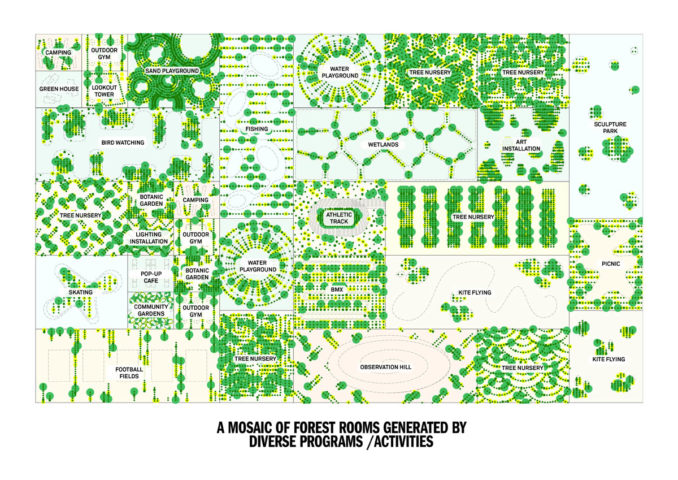
An innovative green eco-system
Going beyond the requirements of the brief, we did not employ a consumerist approach to the landscape with quick ‘instant gratification’, but rather wanted its value to increase over time. We created an ever-changing eco-landscape through multilayered narration, where people, animals and plants overlap and co-exist to thrive in a biodiverse environment. By responding to the 24 solar terms and spaces of various scales, we chose different plants to flourish during various seasons. The originally polluted soil will gradually be rejuvenated through a process of phytoremediation, with the public gradually introduced to different parts of the park as this process takes place. Over 300,000 trees were planned to be planted on the site.
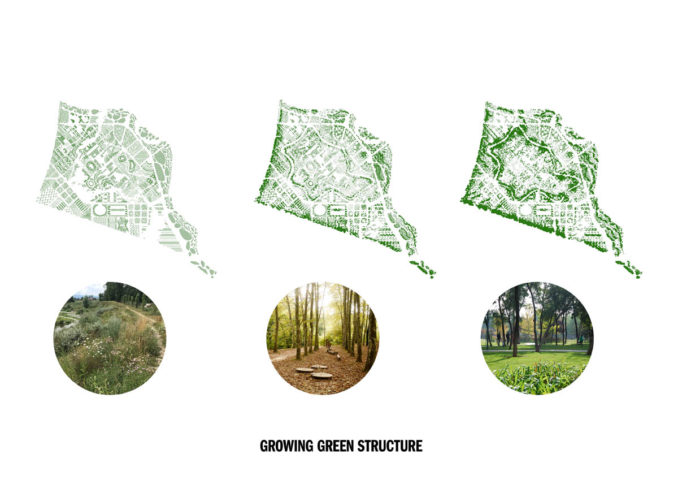
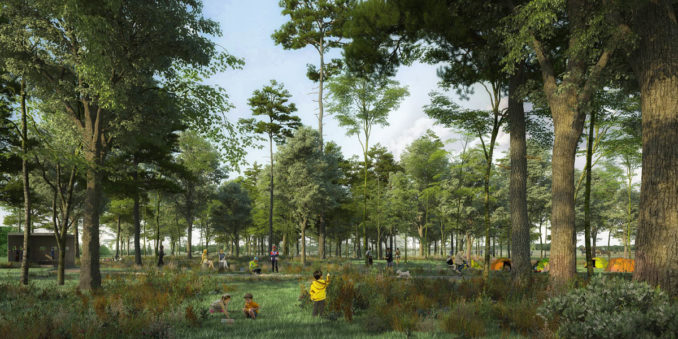
A central green lung in the city
As a sub-center of Beijing, Tongzhou is the new administrative center of the country’s capital city. This urban forest park is now the central ‘green lung’ that offsets and supports the sub-centre, which sits on the southern banks of the historic Grand Canal, one of the most important cultural landscape elements in China. Traditionally, the Grand Canal supported the activity and commerce of the settlements it connects dating back more than 2,000 years and the new park will reignite this forgotten cultural landscape to become a key focal point for wider Tongzhou.
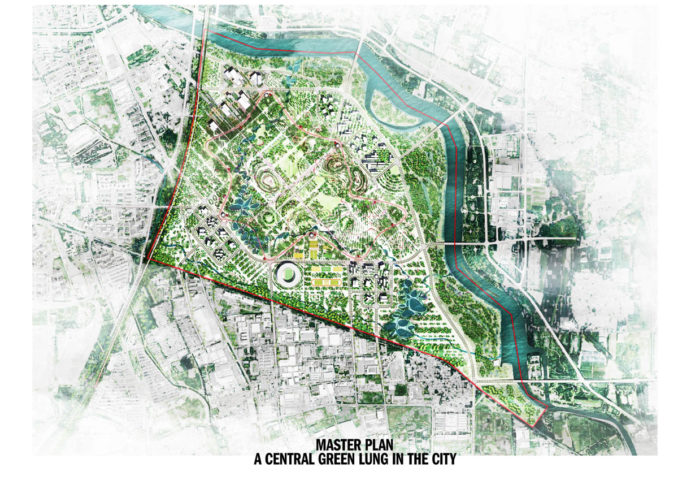
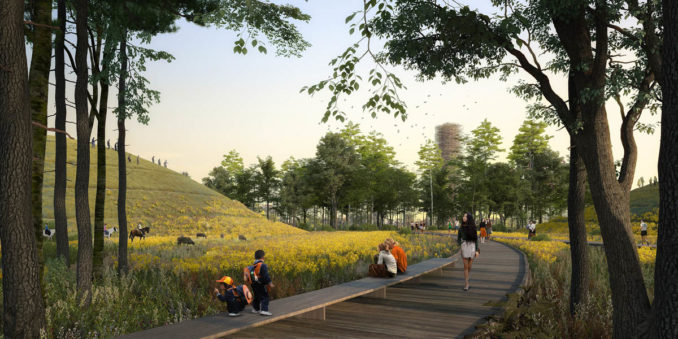
The Central Green Forest Park
Location: Beijing, P.R. China
Landscape Architect: Hassell
Consultants: Landscape Architecture Corporation of China
Client: Beijing Investment Group
Image Credits: Hassell
